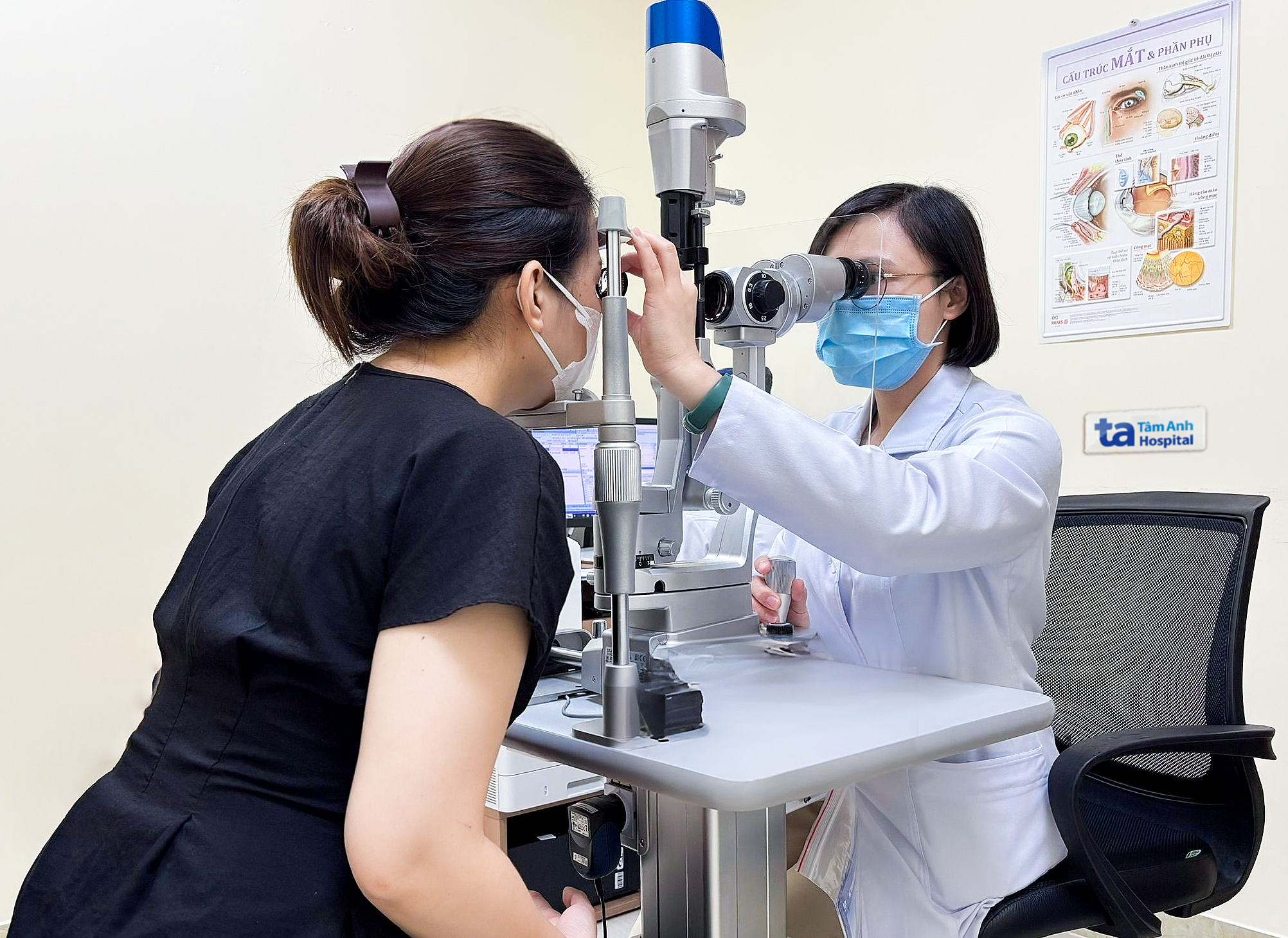Dr. Can Ngoc Thuy, from the High-Tech Eye Center at Tam Anh General Hospital in Ho Chi Minh City, examined Chau using a biomicroscope. While there was no corneal damage, her intraocular pressure (IOP) in her right eye measured 30 mmHg, exceeding the normal range of 16-20 mmHg. Further examination, including gonioscopy, ophthalmoscopy, and optical coherence tomography (OCT) of the anterior segment, revealed damage to the optic nerve, a hallmark of primary angle-closure glaucoma.
"Angle-closure glaucoma occurs when the iris comes into contact with the trabecular meshwork, narrowing or closing the drainage angle in the eye. This obstructs the outflow of aqueous humor, leading to increased pressure," Dr. Thuy explained.
 |
Dr. Thuy examines Chau's eye with a biomicroscope. *Photo: Tam Anh General Hospital* |
Chau was prescribed eye drops to lower her IOP and advised to rest, manage stress, and avoid prolonged work in low light or extended screen time. She was also instructed to follow a healthy diet low in salt and caffeine, while increasing her intake of leafy greens and fruits rich in vitamins A and C to support her eye health.
After two weeks, Chau's IOP stabilized, her headaches lessened, and her vision improved. A month later, her IOP returned to a safe level, the severe headaches subsided, and her optic nerve function was preserved without further damage.
Glaucoma is a serious and often silent eye disease, a leading cause of blindness. Unlike cataracts, which can be surgically treated, glaucoma causes irreversible damage to the optic nerve. Early detection and treatment are crucial for preserving vision. In its early stages, glaucoma often presents with vague symptoms like headaches, eye strain, and blurred vision, which are easily mistaken for fatigue or other neurological issues.
Doctors recommend regular eye check-ups every 6-12 months for individuals over 40, those with a family history of glaucoma, those with severe nearsightedness or high blood pressure, and those experiencing any suspicious symptoms.
Song Lam
*The patient's name has been changed.
| Readers can submit questions about eye diseases here for doctors to answer. |












